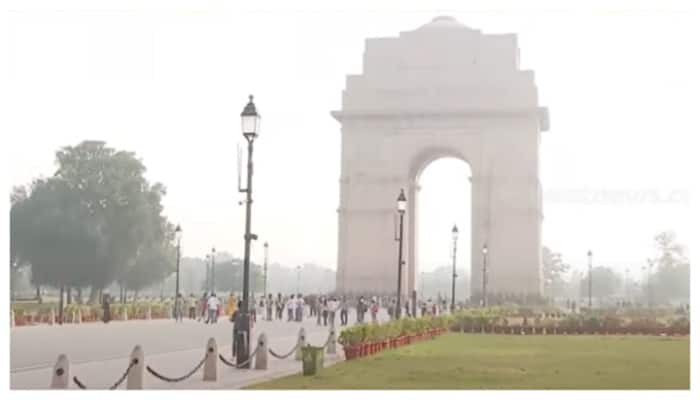Monday saw a decline in Delhi's air quality, with the Air Quality Index (AQI) rising beyond 400 in a number of locations, indicating a move into the "severe" category. This follows a documented increase in pollution levels on Sunday. The Central Pollution Control Board (CPCB) reports that many monitoring stations, including Anand Vihar (433), Wazirpur (414), Jahangirpuri (413), Rohini (409), and Punjabi Bagh (404), reported AQI readings above 400 at 7 a.m.
The "very poor" categorization also applied to other parts of the national capital. Unfavorable weather patterns, such as low temperatures and calm breezes, are blamed for the declining air quality because they have prevented pollutants from dispersing.
The Delhi Air Quality Early Warning System (EWS) stated on Sunday that "meteorological conditions are likely to be extremely unfavorable for the dispersion of pollutants." Mist or pollution is predicted by the India Meteorological Department (IMD) for the early hours of Monday through Wednesday. Wind speeds are predicted to be below 10 kmph, which might make the situation worse.
Delhi's AQI score on Sunday was 382, the lowest of the season, down from 316 the day before. The Graded Response Action Plan (GRAP) is one of the steps the Commission for Air Quality Management (CAQM) has made to counteract the increasing pollution levels. Additionally, the EPA fined companies, automobiles, and building sites that broke environmental regulations.
Between October 15 and October 31, the government penalized 597 locations for violating pollution control standards and ordered the closure of 56 construction and demolition sites. More than 3,900 automobiles older than the legal age limit were seized, and up to 54,000 vehicles without valid pollution-under-control certifications were penalized.
A crackdown on unlawful garbage disposal was part of the pollution control efforts, with more than 5,300 inspections and sanctions against offenders. CAQM has installed water sprinklers, anti-smog guns, and mechanical road-sweeping devices around the National Capital Region (NCR) to reduce road dust; approximately 600 sprinklers and anti-smog guns are utilized every day.
You may also like

How DOGE, a joke crypto, became Trump's 'Manhattan Project '

Conditions Have Helped Bowlers, But Want To Prove Our Mettle As A Batting Unit, Says Rizwan

Coronation Street Platts to be rocked by 'heartbreak' in Gail Platt loss

Bruno Fernandes explains Ruben Amorim's best quality which differs from Erik ten Hag

Train companies face shake-up over 'heavy handed' policing of fare dodging







